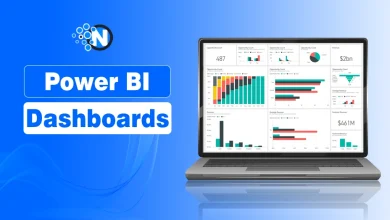
Marketing a product effectively isn’t just about flashy ads or catchy slogans. So your new product is ready to hit the market. It’s about understanding your audience, establishing a compelling message, and using the right strategies to get noticed. But how will you successfully market it to secure more sales?
Countless new products and service ideas are conceived daily. However, most of them fail to hit an ideal number of sales because they are not properly introduced to the target customers. Here, I’ll highlight some of the powerful ways to market a product effectively and stand out in today’s competitive market.
What is Product Marketing?
Product marketing can be defined as a process of bringing a new product to the market by promoting and selling it to the customers. Successful product marketing takes one more step by bridging the gap between a specific audience and your product by using a variety of marketing campaigns to drive more sales.
Product marketing is vital for the success of any product as it serves as the bridge between product development and market success. It ensures that a product not only reaches its intended audience but also resonates with them through strategic positioning and messaging.

How to Market a Product Effectively?
In the below part, I will take you through these important steps and powerful ways to successfully bring your product to the market.
1. Know Your Product
Before you kick start with the marketing phase, you need to have a clear understanding of a product that is ready to hit the market. You need to find answers to questions like:
- What the product is all about?
- What problems or issues it addresses?
- How does it work?
- How much customers will need to pay for it?
- What unique benefits does it offer to the customers?
Finding out the answers to all the above-mentioned questions will help you identify the value proposition of your product. It will then help you create appealing and convincing marketing materials and messages to spread the word about it.
You should also create a detailed user manual for your product to help customers on how to utilize it best to achieve desired outcomes. Along with understanding all the ins and outs of your product, you should also have a clear understanding of how it will fit in your target market.
2. Identify Your Audience
Who is this product for? Find out the answer, and it will help you present your product in front of the right people. In order to promote your product in the best possible way, you need to understand the target audience well. In order to reduce customer acquisition costs for a new product, you should initially focus on a group of people you think are more likely to spend money on it.
People who are using the same product are the best to target who might appreciate a new exciting feature or benefit your product offers. Try to fill an existing need with your product instead of creating a new one.
3. Research Your Competition
Spy your competitors to see how they reach, engage, convert and retain customers. It will help you find out the best and affordable ways to promote your product effectively without breaking the bank. See what they are doing to reach their customers and what better you can do to chase your product marketing goals.
Understanding their strategies and target audience will also help you present your product in front of the right people with convincing and interesting marketing materials.
4. Create a Product Marketing Plan
Right after getting all the important questions about your product and audience answered, now its time to create and execute the product marketing strategy. Just like other marketing campaigns, you should perform proper research to define:
- What is the main objective of your overall marketing efforts?
- Which group of people you are targeting with your marketing materials?
- What tools you will be using to execute your marketing efforts?
- What marketing channels and platforms would be right to reach and engage with your audience?
- What type of content you will be using to attract your target audience?
It will help you create a proper marketing plan to promote your product effectively so you can reach the right audience with the right marketing message to convert more.
5. Creating High-Quality Content
This refers to developing valuable, engaging, and informative materials that capture the interest of your target audience. It can be in various formats like blog posts, videos, infographics, and social media updates. The goal of an effective content marketing strategy is to educate, entertain, or solve problems for potential customers.
The strategy ultimately drives more traffic, boosts the brand visibility, and increases the sales. High-quality content is always well-researched, original, and optimized for search engines to reach a broader audience effectively.
6. Use of Social Media
Marketing through the social media is also an effective communication strategy since business can directly access the targeted customers. Social media, when used correctly, can enhance brand awareness, attract more visitors and ultimately, produce more sales.
1. Not all social media platforms are created equal. Focus on platforms where your target audience spends the most time. For example:
- Instagram: Great for visual content like product photos and influencer collaborations.
- LinkedIn: Ideal for B2B marketing and professional networking.
- Facebook: Suitable for community building and broad audience engagement.
- TikTok: Perfect for viral content targeting younger demographics.
2. Creating a loyal online community goes beyond posting content. Engage with your audience through:
- Interactive Content: Use polls, quizzes, and live streams to involve followers.
- Consistent Posting Schedule: Maintain a regular posting calendar to keep your brand visible.
- Responding to Comments: Answer questions, acknowledge feedback, and show appreciation to build trust.
Example: A fitness brand must occasionally post workout videos, engage the audience through live question and answer sessions or share success stories on the Instagram app. If content is posted in a way that suits the viewing preferences of the platform, then the businesses will have an engaged and an active fan base online.
7. Influencer and Partner Collaborations
Collaborating with influencers and partners can amplify your product’s reach by tapping into established audiences. Choosing social media influencers who align with your brand is helpful. Look for those with an engaged following and a content style that matches your product’s vibe. Focus on:
- Niche Relevance: Ensure the influencer’s niche fits your target market.
- Authenticity: Influencers who genuinely like your product will create more convincing content.
- Engagement Rate: A smaller but highly engaged audience often delivers better results than a large but passive one.
A skincare brand could collaborate with beauty influencers who regularly review products – to ensure the authentic promotion.
Strategic partnerships with businesses offering complementary products can expand your customer base. Consider Co-Branding, Cross-Promotions, and Affiliate Programs, for better outcomes. A fitness apparel brand should partner with a nutrition supplement company for co-branded fitness challenges, benefiting both businesses.
The Finale
Effective product marketing is not just about pushing your product to the consumer; it’s about building strong connections, understanding consumer needs, and delivering value consistently. Some of the methods that are used to promote the brand are: storytelling, social media, business intelligence, and working with influencers.
The secret is continuity, evaluation, and constantly having new strategies in order to not be caught off guard. Successful marketing isn’t just about making a sale—it’s about creating lasting relationships that turn customers into loyal advocates.




